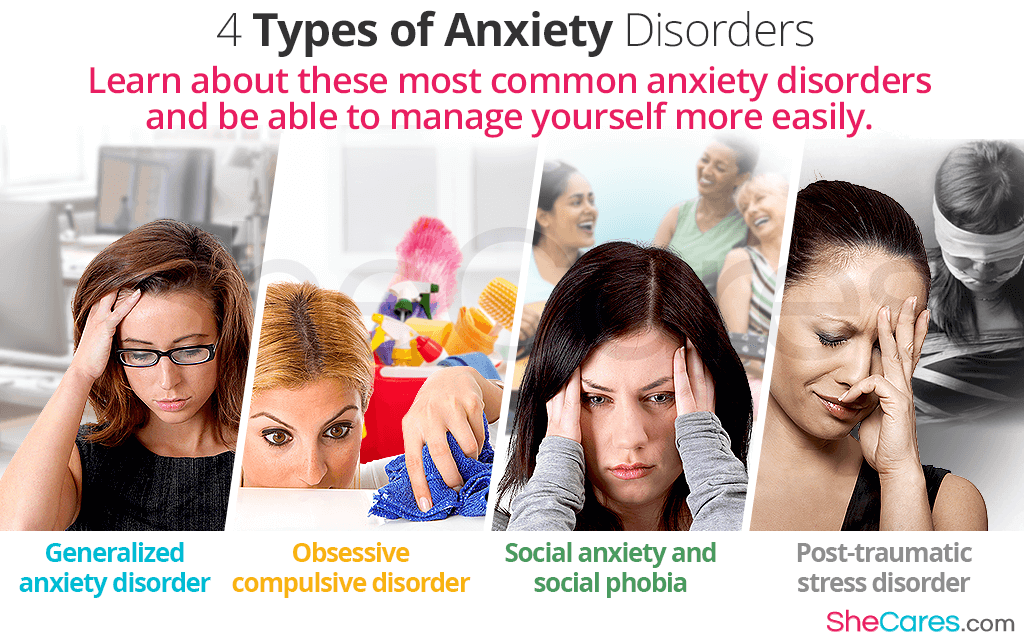The experience of anxiety is a common one, encountered by us all at various moments of life. For some women; however, the sense of anxiety is so overwhelming and consuming that it can actually be diagnosed as a specific disorder. There are a range of recognized types of anxiety disorder, each pertaining to different triggers and everyday factors which can cause stress and worry in some people. Read on to find out more about four of the most commonly diagnosed anxiety types.
Generalized Anxiety Disorder (GAD)
This is believed to be the most common type. It describes people who experience anxiety to a more severe degree than is considered healthy and normal. Sufferers of GAD encounter anxiety throughout the majority of their day, and can become consumed with worry about almost all aspects of life. A doctor might diagnose GAD if symptoms have been present for six months or more. Some of the most common symptoms include:
- Your anxiety inhibits you in everyday life
- Strong sense of inadequacy
- Difficulty concentrating
- Irritability
Obsessive Compulsive Disorder (OCD)
Many people will be familiar with this type of anxiety, as it affects a large proportion of people - thankfully usually on a moderate scale. OCD is a disorder which causes sufferers to become absorbed with worry about matters which seem small to other people; they become obsessed with such things as:
- The cleanliness of an item or body (such as hands)
- The precise order or presentation of things
- Whether a light has been left on
- Counting objects
Those who have severe OCD can find that the condition effects their relationships, work, and social functioning, because they are constantly preoccupied with other concerns.
Social Anxiety and Social Phobia
Some amount of nervousness concerning new people or large groups is natural; however, for those who experience social anxiety, this emotion can be so extreme that it causes a sense of dread and fear. In severe cases, social anxiety can actually stop sufferers from leaving the house - therefore interfering with their schooling, work, relationships, and worsening their ability to function in society. It can be a very difficult condition to live with, especially due to the fact that the very nature of it might mean you avoid visiting a doctor to discuss your symptoms.
Post-traumatic Stress Disorder (PTSD)
Originally recognized in servicemen who had experienced traumatic events during war, PTSD is characterized by the fact that it develops after someone has been exposed to a specifically difficult or scarring event. These might include:
- Witnessing acute violence or death
- Surviving a disaster
- Being attacked
- Military combat
- A car crash
After experiencing events such as these, it is possible for detailed memories to present themselves (flashbacks) at any time. This may then lead to renewed stress and anxiety which can be difficult to alleviate.
These are just four of the most common types of anxiety disorders, but there are several others which can affect people. Learning about the different kinds can be useful in order to recognize them either in yourself or in a loved one, and enhancing your understanding about them should enable you to manage anxiety more easily.
